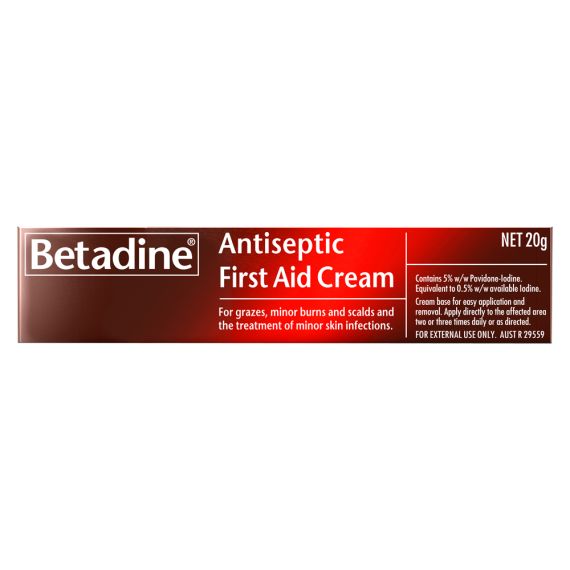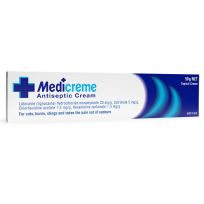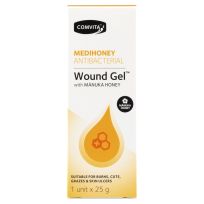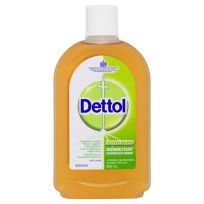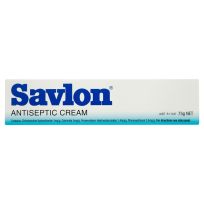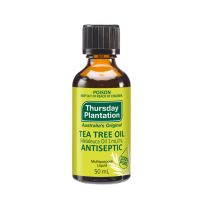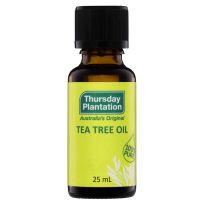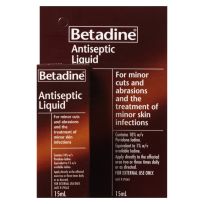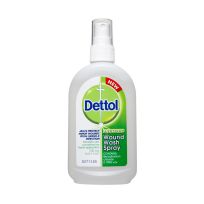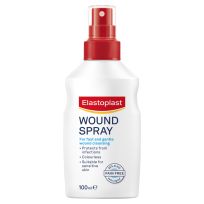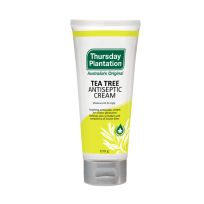Betadine Antiseptic First Aid Cream 20g
Betadine Antiseptic First Aid Cream is ideal for grazes, minor burns and scalds and the treatment of minor infections.
$
11
.89
$
2
.60
off RRP
Betadine First Aid Cream is recommended for grazes, minor burns and scalds and the treatment of minor infections.
Contains 5% w/w Povidone-Iodine. Equivalent to 0.5% w/v available Iodine.
Wash wound with clean running water.
Clean with disposable sterile swabs.
Using sterile gauze, dry the wound first, followed by the surrounding skin.
When the wound has stopped bleeding, apply the appropriate Betadine product to the wound and to the surrounding skin.
Cover wound with appropriate size dressing if friction with clothing or further injury is likely.
Secure dressing with conforming cotton bandage, fastened with safety pin or adhesive tape.
Treatment of Minor Cuts and Scratches
Wash with clean running water. Clean with disposable sterile swabs. Carefully dry with sterile gauze, starting with the wound then working outwards to the surrounding skin. When bleeding stops, apply Betadine Antiseptic Liquid. Cover with a non-stick sterile dressing. You should see a doctor if the wound starts throbbing or turns red.
Treatment for Grazes and Gravel Rash
Gently remove foreign matter. Wash the affected area with clean running water. Clean with disposable sterile swabs. Carefully dry with sterile gauze, starting with the wound then working outwards to the surrounding skin. When bleeding has stopped, apply Betadine First Aid Cream. If required, cover with a non-stick sterile dressing. Then apply a conforming cotton bandage.
Treatment of Serious Cuts and Wounds
Control bleeding by applying and maintaining pressure using a bulky sterile dressing. Raise the injured area if possible. See a doctor promptly, bearing in mind that tetanus immunisation may be needed.
Treating Minor Burns and Scalds
Cool immediately in cold water for 10-20 minutes. If red or blistered, cover with a non-stick sterile dressing and see a doctor.
Treating Blistered or Deeper Burns
Immediate cooling (do not over cool). Do not clean. Do not remove charred clothing. Cover with a non-stick sterile dressing. Refer to a doctor or hospital immediately.
Treatment of Weeping Wounds
Clean with sterile gauze and sterile saline. Apply Betadine Antiseptic Ointment and cover with a non-stick sterile dressing. Then apply a conforming cotton bandage. You should see a doctor if the wound starts throbbing, turns red, or if the fluid weeping from the wound is yellow (like pus) or green in colour.
Treatment of Minor Fungal Infections
First clean and dry minor fungal infections (like tinea and ringworm) thoroughly. Then apply Betadine Antiseptic Liquid or Ointment 2-3 times daily. If the problem persists you should see a doctor.
Treatment of Blisters
Protect from infection and injury. Apply Betadine Antiseptic Liquid and cover with a non-stick sterile dressing if the blister is large, or an adhesive dressing strip if small.
Not to be used in known hypersensitivity to iodine or povidone. If irritation, redness or swelling develops, discontinue treatment and consult a doctor. Not recommended during pregnancy or breastfeeding. For further information on contraindications to the use of povidone-iodine containing preparations, please refer to the package insert or consult your healthcare professional prior to use.
Povidone-Iodine preparations should not be applied over a long period and to large areas of the skin (e.g., not to more than 10% of the total body surface and for not longer than 14 days) unless strictly indicated.



